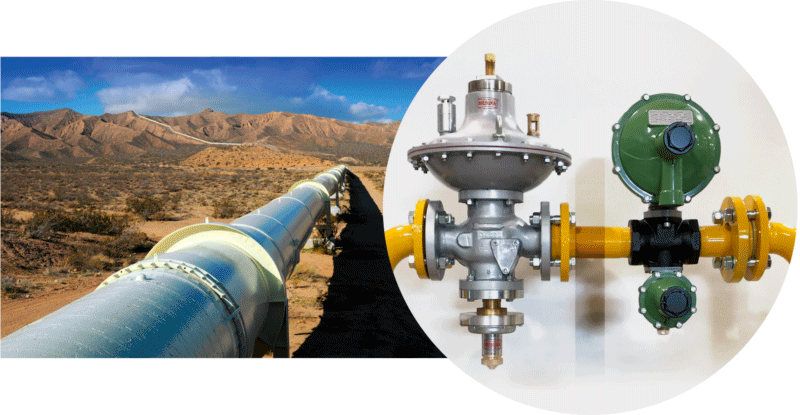
Global energy demand is growing rapidly, with no signs of letting up. What’s more, there are increasing calls for that energy to be “green”, and an ever greater need for energy networks to expand their coverage. Against this backdrop, all estimates of future energy scenarios point to natural gas as the primary source with the highest growth rates. First of all, just think of its domestic use, be it boiling water on the stove, taking a hot shower or heating the house: these are all daily actions that require the use of natural gas, where possible. But for that gas to get where it is needed, it must be transported and distributed. This journey,which is for the most part invisible, takes place through an extensive network of mostly underground pipelines that run from the main ridges to the different markets, eventually delivering gas to the end user.
But how does gas actually reach our homes? Natural gas is transported at high pressure in the pipelines and is then fed into citizens’ gas meters thanks to gas pressure regulation stations located at different sites along the network. The supply system essentially works as follows: the gas arrives from the national gas company’s pipeline, where it then undergoes what is known as a “two-stage” reduction process in order to supply the gas at the pressure required by the final consumer. For example, the gas pressure goes from 50-60 bar to 12 bar (high-pressure network) and then from 12 bar to 0.5 bar (medium-pressure network), eventually making it to our homes at an even lower pressure of 0.02 bar. This kind of distribution is the final phase of the gas supply chain and can be divided into primary distribution and secondary distribution. Primary distribution brings gas to major industrial and thermal power plants as well as local gas distribution companies. Technically speaking, it consists in connecting these users directly to the primary gas network. Secondary distribution pipeline brings gas directly to private consumers, in which case a low-pressure service line is required.
Cavagna Group/Mesura natural gas regulators are actually used to reduce pressure in the various steps of gas supply, from transport to primary and secondary distribution. This is the result of a business plan that has achieved important milestones for the Group over the years.
Indeed, the Cavagna Group can now count on a wide range of high-flow natural gas regulators. These products are capable of handling a maximum inlet pressure of 100 bar and then reducing the pressure to that required in primary and secondary distribution networks, with specific regulators for industrial, commercial and domestic users. New products have constantly been developed since 2009 in order to expand and enrich Cavagna’s range of regulators. Furthermore, several investments have been made in production lines, both in France and in Italy. The Group’s strategic vision is to broaden its range of products and services beyond gas regulation. With a technical, organizational and commercial road map in hand, the Group is well on its way to achieving this goal. And its market position and identity will continue to reflect those characteristics that have long distinguished the Cavagna Group: a wide range of products where high quality is guaranteed.









